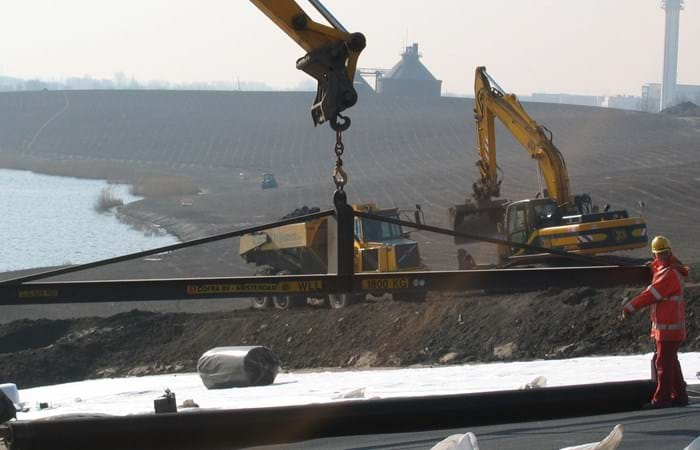Cofra has specialized in the installation of PE geomembranes and geotextiles and is one of the largest installers of these materials in the Netherlands. The company is ISO 9001, 14001 and 45001 certified. With the use of our safety policy NINA and quality policy as envisioned by the Way of Working, Cofra is a high-class contactor, capable to take on any size of project. Our history with HDPE liner goes back several decades; we were the first contracting company in The Netherlands to be certified for installation in accordance with the KIWA BRL K537. For more than 30 years our installation teams perform any task according to strict quality and safety standards.
Control of the spread of pollution or blockage of water flow using PE (polyethylene) liners is the most commonly used method for environmental and civil engineering applications. The material used consists of HDPE with a portion of carbon black, anti-oxidants and stabilizers. The material is resistant to a large number of chemicals, including acids, salts, alkalis, alcohol, oils and hydrocarbons. At waste disposal sites like municipal waste or tailings deposits, HDPE (High Density PolyEthylene) membranes are installed to separate the deposited material from groundwater and open air and keep the materials in a contained environment. In civil applications the liners can be used to seal incinerated ashes and contaminated soils when these materials are applied as part of a construction embankment. Other infra-applications focus on blocking waterflow into for example aqueducts, underpasses or sections of line infrastructure below the water table. With the extra-long life time expectancy of HDPE liner of over 100 years, the material fulfills normal contract requirements easily.
HDPE liner can also be installed vertically when equipped with locks. This Geolock concept cutoff wall is a waterproof barrier, which consists of a patented lock construction, made of extruded HDPE, welded to 2.5m wide, 2.0 mm thick HDPE liner panels, which are installed vertical up to at least 30 meter into the subsoil.

